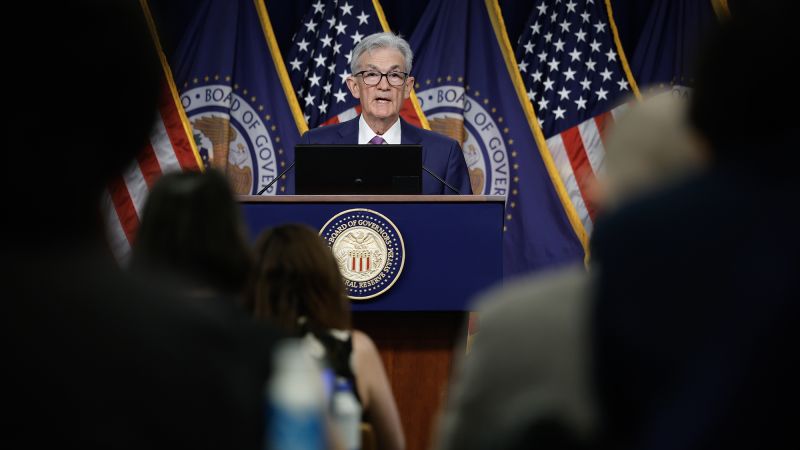The Federal Reserve is expected to maintain interest rates at a 23-year high for the seventh consecutive meeting and signal that they will cut rates fewer times this year than previously thought. Investors and economists will closely watch the Fed officials’ economic forecasts, particularly the “dot plot,” which is expected to show one or two rate cuts instead of the three forecasted in March. The timing of the first rate cut will hinge on projections for inflation, which will be revealed in the upcoming Consumer Price Index release for May.
Chair Jerome Powell’s comments during the post-meeting news conference will provide additional clues on the central bank’s future policy moves. The Fed’s current strategy involves waiting for more data to confirm inflation is moving towards their 2% target before considering a rate cut. The strong job market is a factor influencing the Fed’s decision to hold off on cutting rates, which is contrary to other central banks that have already lowered borrowing costs.
Wall Street’s prediction for the first rate cut is currently September, based on futures. Powell will likely give hints about future policy moves during his annual speech at the Jackson Hole economic symposium in August. There is broad consensus among Fed officials that interest rates are sufficiently high, allowing them to maintain rates steady due to the economy’s resilience. Concerns about making the right decision on rate cuts are related to the risks of acting too soon versus too late, with inflation heating up or the economy slipping into a recession respectively.
While the US economy remains healthy by several measures, many Americans are facing financial pressure with high interest rates, elevated inflation, debt accumulation, and shrinking savings. Consumers have reduced spending in recent months, prompting retailers to notice changes in purchasing behavior. Unemployment projections are likely to be revised higher this year due to the current 4% jobless rate. While a weak jobs report for April raised concerns about economic deterioration, data suggests it may have been a one-off event rather than a trend.
The Fed’s target inflation rate is 2%, and officials will continue to monitor inflation until it reaches and maintains that level over several months. The preferred inflation gauge, the Personal Consumption Expenditures price index, showed a decrease to 2.7% in April from 4.4% in the previous year. However, on an annualized basis, consumer prices have accelerated, raising concerns about inflation levels. Powell has expressed dissatisfaction with 3% inflation, with shelter costs being a significant factor. The upcoming inflation report will provide insight into whether declining rents are reflected in the data.
Overall, the Fed is cautious about inflation and will only consider rate cuts once inflation is at the desired level over a sustained period. The central bank’s approach involves waiting for more data and cautiously considering whether the economy can handle rate cuts without triggering inflation or a recession. Powell’s upcoming speeches and the Jackson Hole symposium will provide more clarity on the Fed’s future policy moves. As the economy shows signs of slowing and consumers face financial pressures, lower interest rates could provide some relief in the second half of the year.


